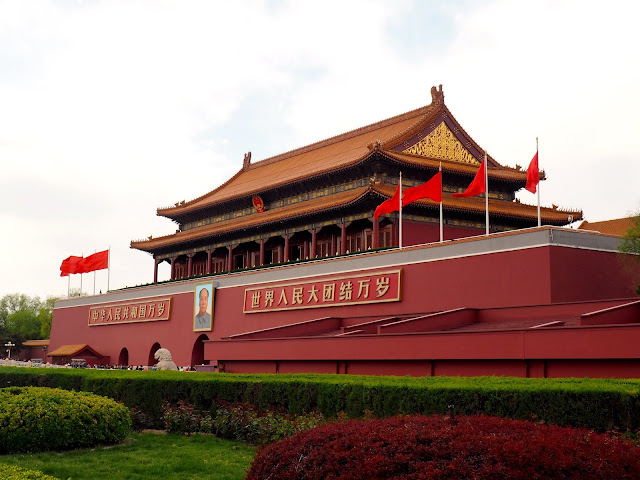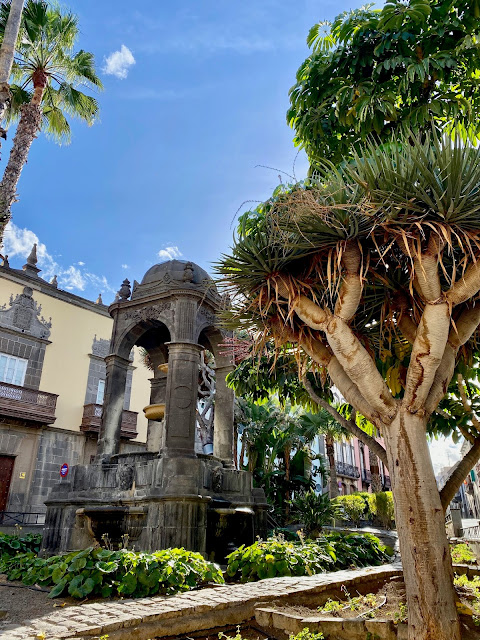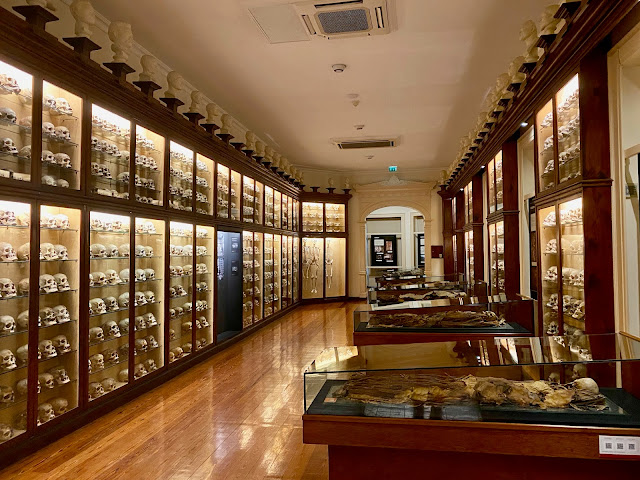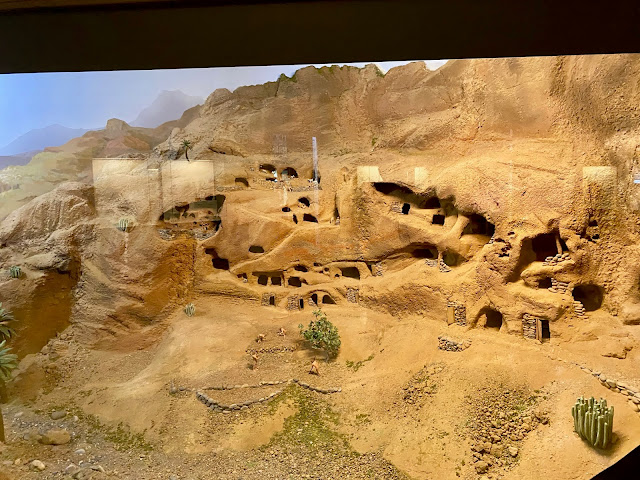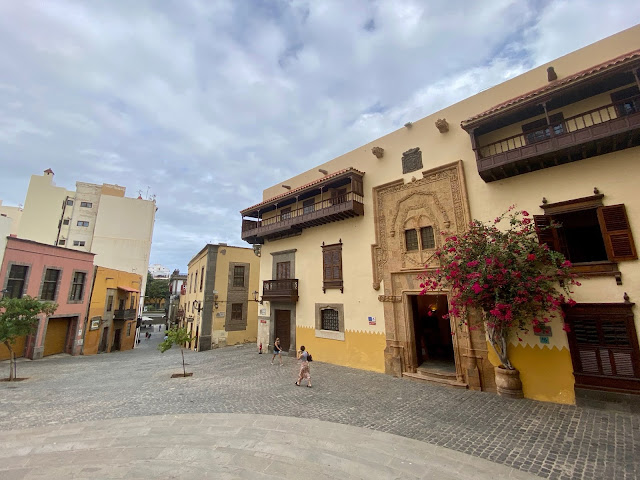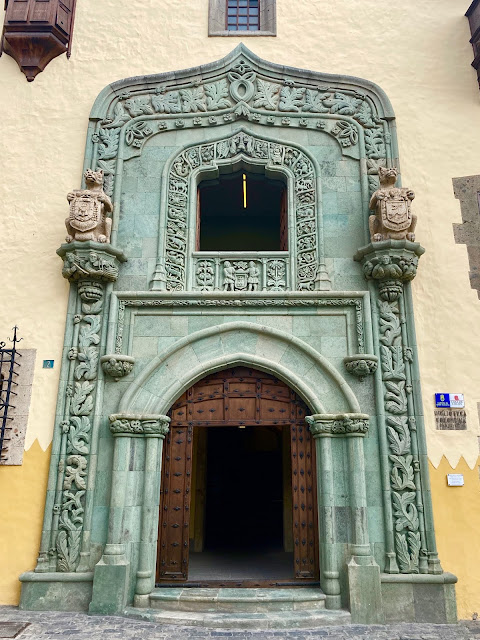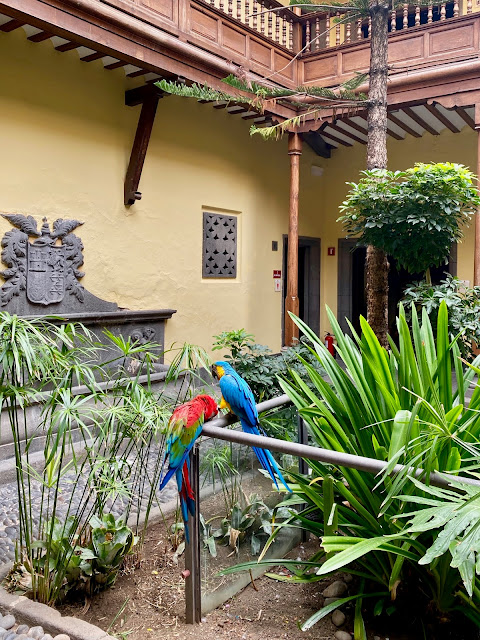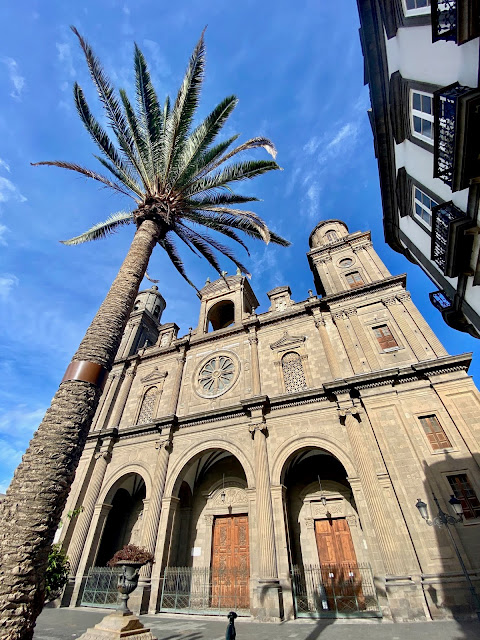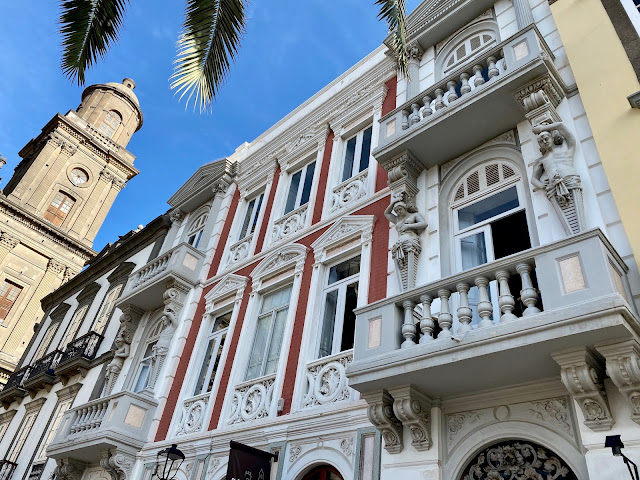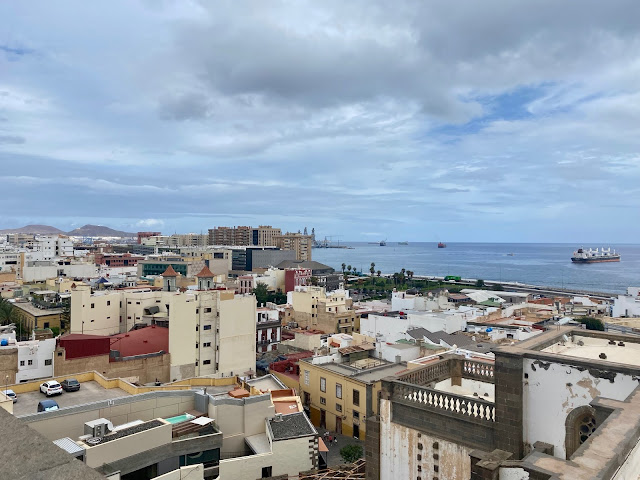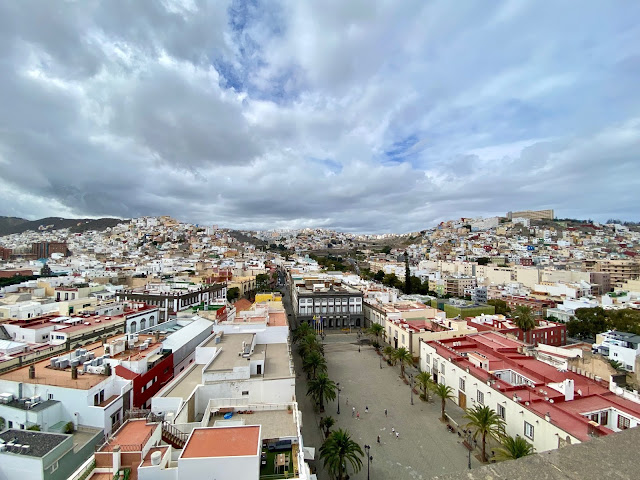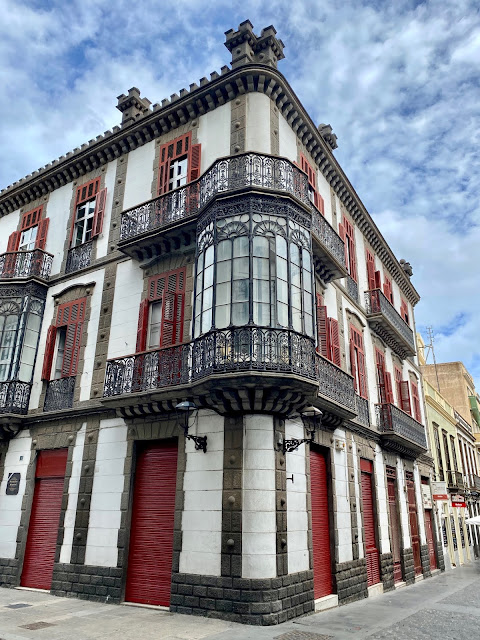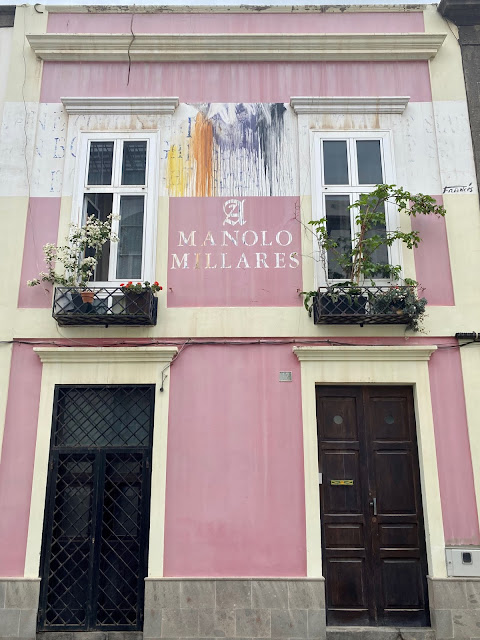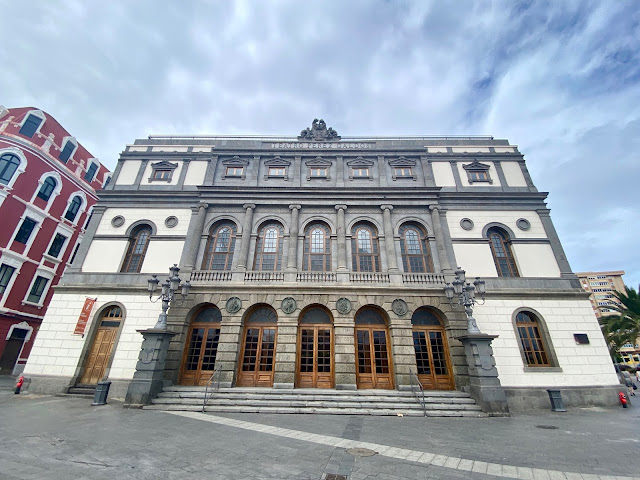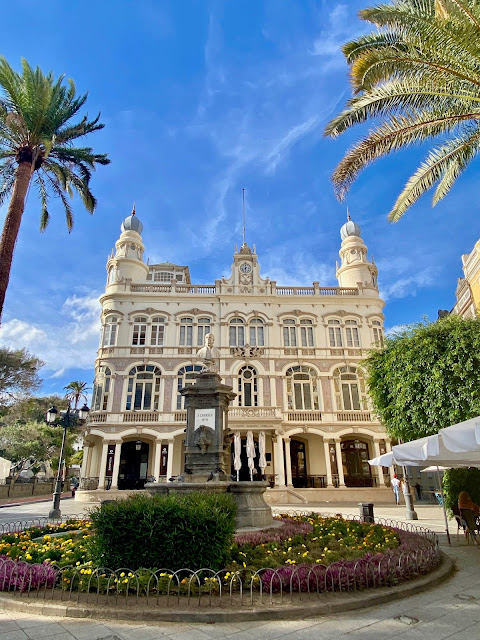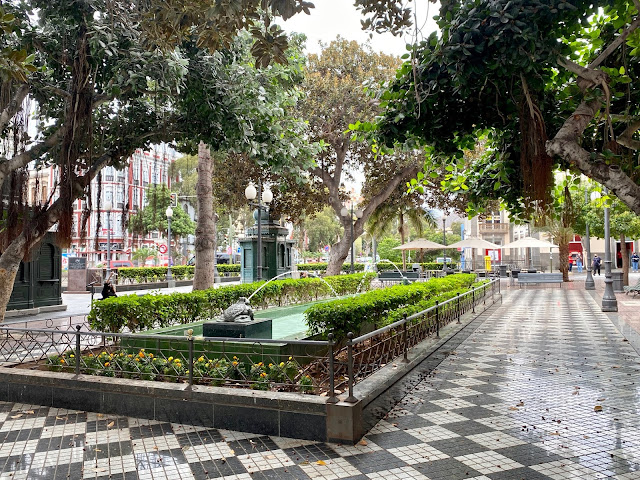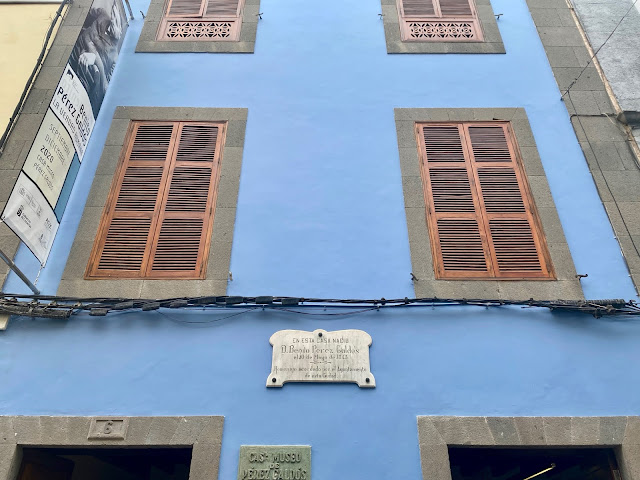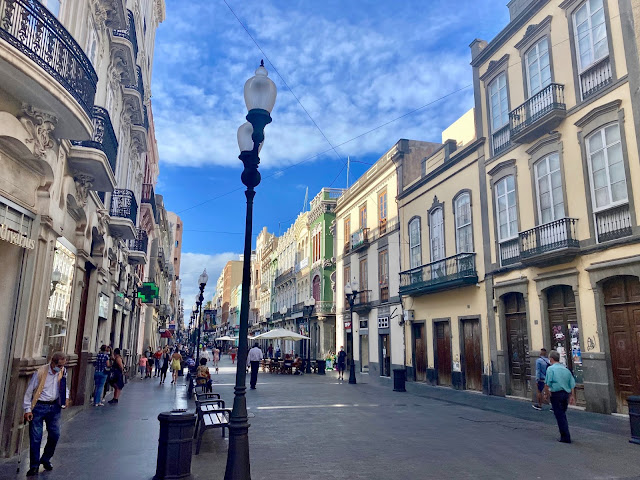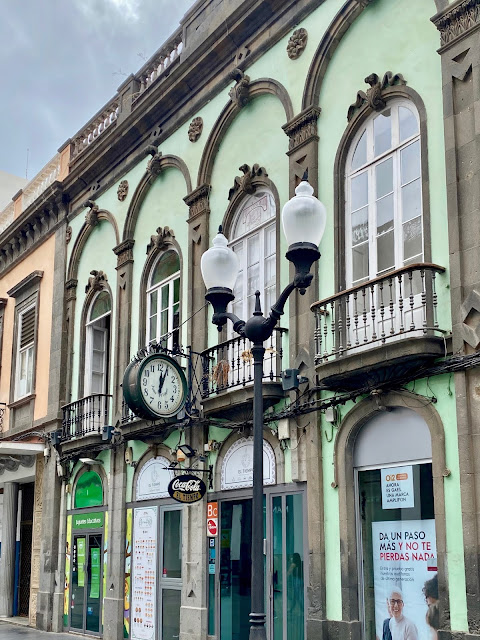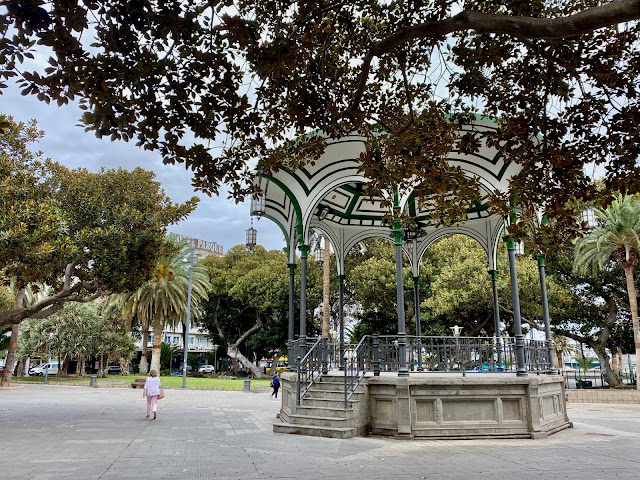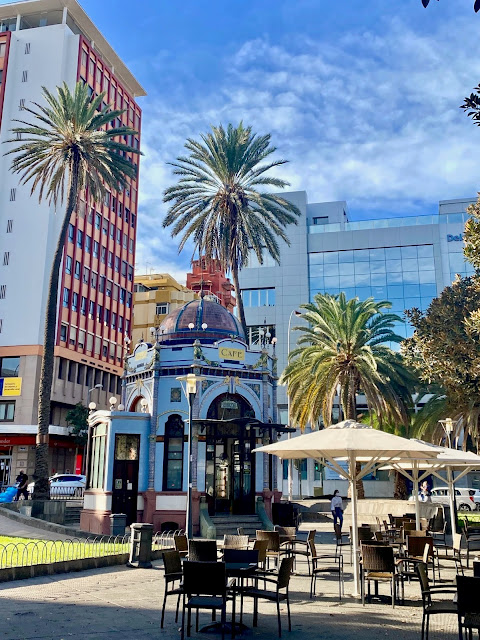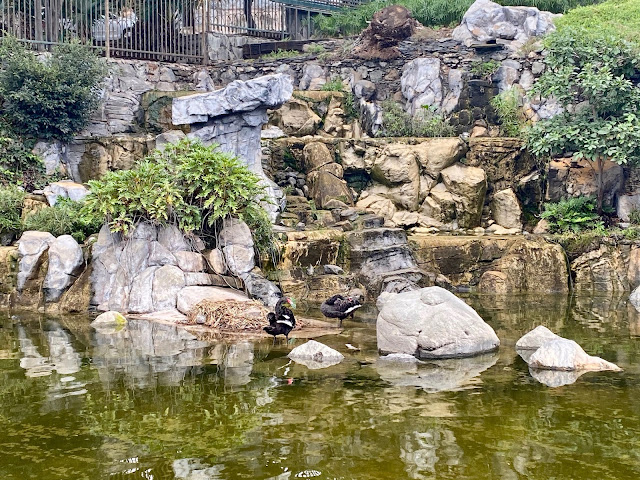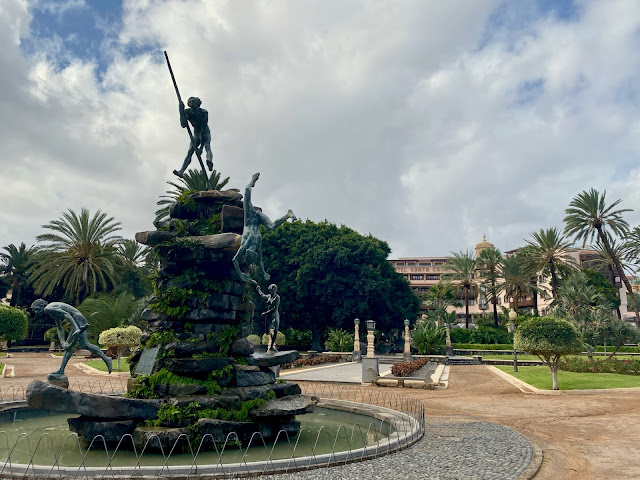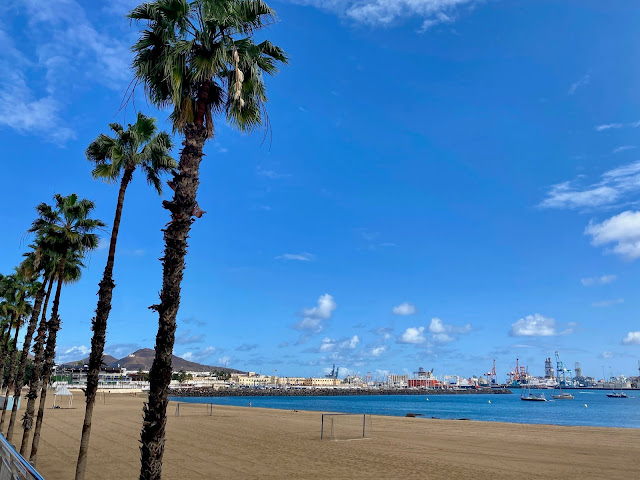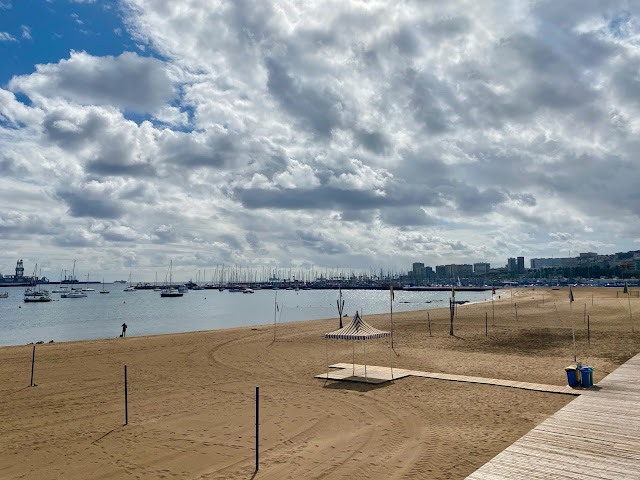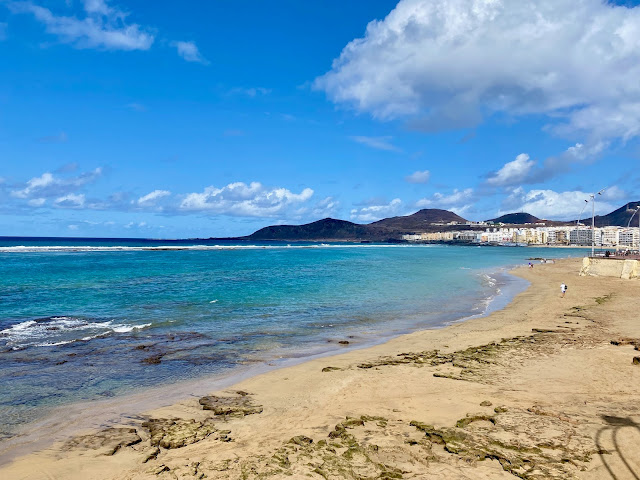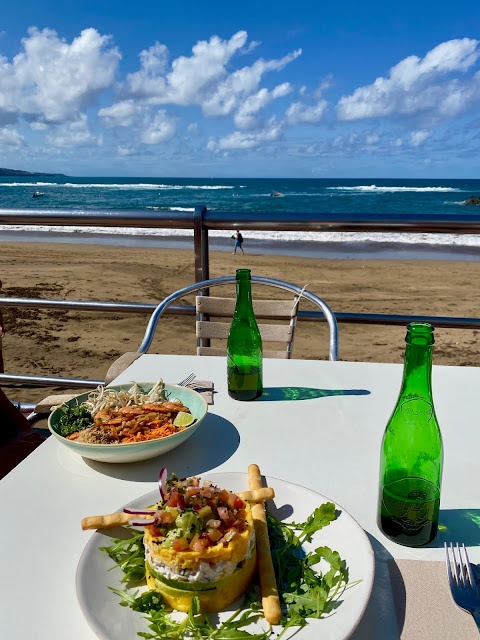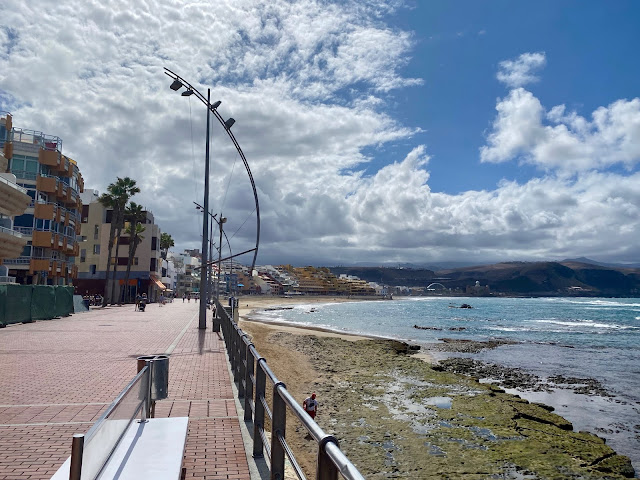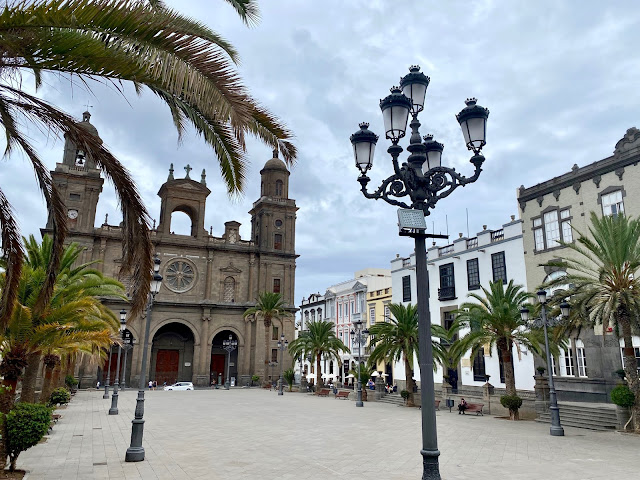
Las Palmas, Gran Canaria | Spain
Ok, yes, I know it’s been a month since my last post, that return to blogging I talked about in August didn’t exactly go to plan. But I’m trying to not be so hard on myself for not being productive, when it’s been such a weird year. Anyways, I actually have some decent content that I’m feeling inspired to write about again, because I TRAVELLED! Specifically for this post, to Las Palmas, the largest city in Gran Canaria.
Covid Note
Now, yes I am aware of the issues around travelling during a pandemic. But I reached a point where I needed it for my mental wellbeing. My bosses had to make me officially redundant from my job, effective from the end of October. There simply isn’t enough tourism to sustain us over the winter. I have a few ideas on what I might do next (more on that another time), but I was feeling pretty lost and down and frustrated by the whole situation. This has been true all year more or less, but it was worse now. So, taking a trip felt like I was finally able to do something I love again, and gave me a break from the job hunt I now face.
I travelled to Spain to visit friends, who are in areas where the rates are lower than the rest of the country, no worse than in Edinburgh right now. They’re also parts of Spain I haven’t been to before! I made sure to follow all the rules there properly and complete all the necessary paperwork. I’m now back in the UK for my 2-week quarantine period, which I am observing correctly. Despite the numbers of people who’ve told me it would be pretty easy to ignore it!
Arriving in Gran Canaria
Right, that’s the Covid notice out of the way, on to the fun part. My trip started off in Gran Canaria, where I was staying in Las Palmas to visit a friend working there. I spent the first few days in the city, before exploring further afield at the weekend, when she was off work. There’ll be a second post coming about that half of the trip. I arrived in the middle of the afternoon on my first day, and was pretty exhausted after an early morning and a long flight. Does anyone else forget just how far away the Canary Islands are? They’re really closer to Africa than Europe?
I was also very surprised by how cloudy it was – I signed up for Spanish sun! I learned that while much of the island gets plenty of sun, Las Palmas frequently has this cloud hovering over the city, especially in the afternoons, though rain isn’t common. The cloud is nicknamed ‘panza de burro’, which literally translates to ‘donkey’s belly’! Anyways, it was a very quiet, chilled afternoon, followed by a stroll around Vegueta, the old town area of Las Palmas. We stopped for a couple of beers at a street cafe there. The cloud did move off in time for our walk though. A lot of my photos are from that evening rather than the next day, when it was significantly more overcast!
Day One
Museo Canario & Casa de Colon
The next morning, I headed out to explore the Vegueta area in more detail while the panza continued to float overhead. There actually was rain in the forecast, so this was to be my indoor museum day! I was still able to appreciate the beauty of the old town, though, with its winding cobbled streets and beautiful architecture. What I wouldn’t give to have a cute little balcony like so many of the houses do!
My first stop was the Museo Canario, which covers the island’s early history of its indigenous people, before the Spanish arrived. There were lots of artefacts and models showing how they lived and worked and farmed the land. The museum also has an audioguide if you scan the QR codes. There was a lot about their burials and funerary rites, with the actual mummified remains and skeletons of people on display. I was certainly not prepared to walk in to a room full of so many skulls, but it was definitely interesting!
The other popular museum in the area that I visited is the Casa de Colon. Christopher Columbus stayed in this house when he stopped in Gran Canaria en route to the Americas. It’s a pretty building, all painted yellow and situated around a central courtyard full of plants. There’s even a pair of macaws who live there! There are exhibits about his time on the island and his voyages, as well as on ships, maps and navigation from that era. I think there were more rooms upstairs, but it seemed to be closed off for renovation. It didn’t take me that long to get around the museums, less than an hour in each I would say. But I suppose it depends on how interested you are in the topic. I definitely didn’t read or listen to everything!
Catedral de Santa Ana & Triana
The central feature of Vegueta is the Catedral de Santa Ana, the main cathedral of Las Palmas. It overlooks the Plaza de Santa Ana, the main square in the area. It’s a wide, open square, lined with palm trees (of the hundreds around the city, being its namesake!) and benches. At the front of the square, there are several statues of dogs looking towards the cathedral. I eventually learned that apparently they were modelled after the Canarian hunting dogs that the indigenous islanders kept? I don’t know if that’s confirmed though!
To visit the cathedral, you have to buy a ticket to visit the Museum of Sacred Arts attached to it, but this didn’t really appeal to me. Instead, I bought the €1.50 ticket to go one of the bell towers, which was absolutely worth it for the panoramic views I got up there! I could see all over the city, and to the port and out to sea as well. The northern part of the city is quite modern, but around Vegueta and to the west, it climbs up into the mountains. There are hundreds of little coloured houses perched all along the steep crags, with a million stories inside to be told I’m sure.
I crossed over the main road – which is built inside a former river, and the closest translation we could find was ‘gully’ – to the Triana district. This is the city’s main commercial, shopping area. Despite being commercial, there are lots of beautiful buildings still. The pedestrianised zone is full of pretty street lamps and more balconies, so it’s nice to wander around even if you aren’t doing much actual shopping (which I wasn’t).
There are a couple of particularly notable buildings in the area as well, including the Teatro Perez Galdos, named after the city’s most famous writer. There is also the Gabinete Literario, a stunning 19th century cultural centre. I passed by the Casa Museo de Perez Galdos, which is inside the house where he was born. But as I haven’t read any of his work, and they only had tours in Spanish, I didn’t visit. I wandered around the area and all the way up to the Parque de San Telmo. It was a small paved park full of trees, with a bandstand and a beautiful Art Nouveau kiosk cafe.
CAAM
I wandered back over to Vegueta to meet my friend for a late lunch (well, not really that late by Spanish standards actually!). Then I continued on to one more museum while she had a meeting. This time it was the CAAM (Centro Atlántico de Arte Moderno), a modern art gallery with temporary exhibitions by various artists. I think I was the only person there at that time, so social distancing was definitely not an issue! Modern art is a bit hit or miss for me, as I feel like I can’t fully appreciate or understand pieces just by looking at them. I need some sort of explanation of the artist’s intention. But then I question if that should really be necessary when creating art or shouldn’t it speak for itself?
Anyways, I could write loads (and have before) about this topic, so I digress. I certainly didn’t understand a lot of the pieces I saw in the CAAM that day, but a few of them were pretty cool. Especially those by a Cuban artist, after we travelled there at the start of this year. It filled in a bit of time anyways, until my friend was free again. We met to go for some drinks and dinner. Just in time too, as the skies suddenly opened and it poured with torrential rain for most of the evening!
Day Two
Parque Doramas
The next day, while my friend was back in work again, I set out to explore more of the city. This time I headed north all the way to Playa de las Canteras. This is the most popular part of the city for tourists (though the south of the island is where the majority go), to enjoy the beach there. However, rather than taking the bus, I had decided to walk. It should have taken about an hour, but took me nearly two, as I was exploring other areas along the way.
I headed up through Triana and on to Parque Doramas. I had seen it listed as one of the main parks in the city, but it ended up being smaller than I expected. It was just a few paths through the trees and several water features. Although watching the black swans flying across the surface of the water was a pretty exciting moment! The park also sits behind a large hotel, which I hadn’t realised at first. One of the water features actually had a raised drawbridge that would lead into the hotel if lowered.
I exited the park through the hotel grounds, and it was definitely an impressive looking place. Although, I wasn’t entirely sure if I was meant to be walking across their front gardens. There were plenty of ground-staff around and no one stopped me though! It had an interesting statue at the front gate too, a rock with figures leaping from it.
Parque Romano
From there, the quickest route to the beach would have been to continue directly north. Instead I chose to cross the main road to the east, to walk alongside the port. My route took me first through the Parque Romano, which runs alongside the coastal road, and seems to be especially popular with runners. It was a bit annoying being on that side of the road, instead of closer to the water. However, I wasn’t sure how to cross such a major road, and I could at least still see all the yacht masts crowding the harbour, and the hills of La Isleta beyond.
I eventually did cross the road at the end of the park, to reach the promenade behind Playa de las Alcaravaneras. This beach was pretty empty, but my friend had already advised me that it wasn’t as nice as Las Canteras. The water was more polluted, being so close to the port. Sure enough, I could see plenty of huge shipping vessels drifting by further out to sea. Still, it was nicer walking alongside the coast than through the middle of the city, I thought anyways. Continuing north, I eventually had to cut through a few streets of tourist shops and restaurants. I passed through the Parque de Santa Catalina, which I would describe as a square rather than a park really.
Playa de las Canteras
Then it was just a few short metres to the beach itself. It’s a huge stretch of sand, curving around most of the north side of the city, backed by a promenade lined with restaurants. I could see why this is the most touristic part of the city. But given that it was October, and tourism is down this year anyway, it wasn’t all that busy. Most of the beachgoers seemed to be older retirees, which also made a lot of sense seeing that it was a Thursday! I found a spot to soak up some sun for a while – because thankfully the cloud had moved off enough to let it shine through. I did some writing and my fair share of people-watching while I was there.
An hour or two later, my friend arrived after work, and we met for lunch on the promenade at La Bikina. We got lovely seats right beside the sand. She had told me they served international food, but I wasn’t expecting to see everything from Mexican to Indonesian on the menu! I went with a Peruvian dish in the end, which was larger than I could manage to eat.
We headed back down on to the sand afterwards, to sunbathe a bit more, then go for a quick swim. This beach is particularly popular with surfers (as well as many other beaches around the island), as the waves get pretty big sometimes. Luckily for us swimmers, it wasn’t too much that afternoon. We whiled away most of the afternoon there, before catching the bus back through town. We had a quiet evening in – sun and the sea does tire you out a bit apparently!
Don’t forget to check out Part 2 of Gran Canaria, the island beyond Las Palmas!

Musings on Autumn
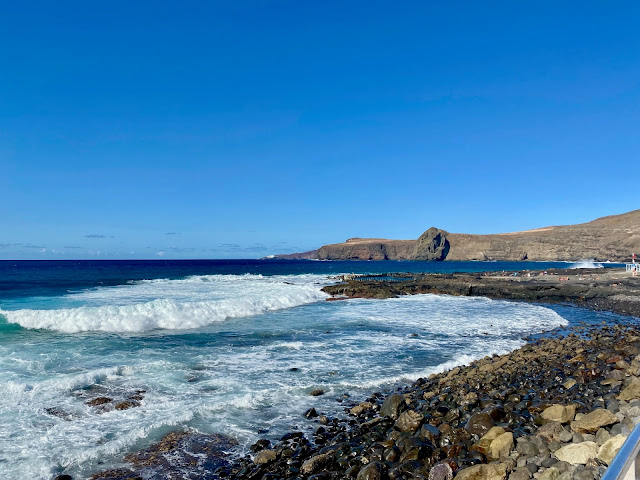
Gran Canaria | Spain
You May Also Like

The Writer’s Museum | Edinburgh
30 January 2018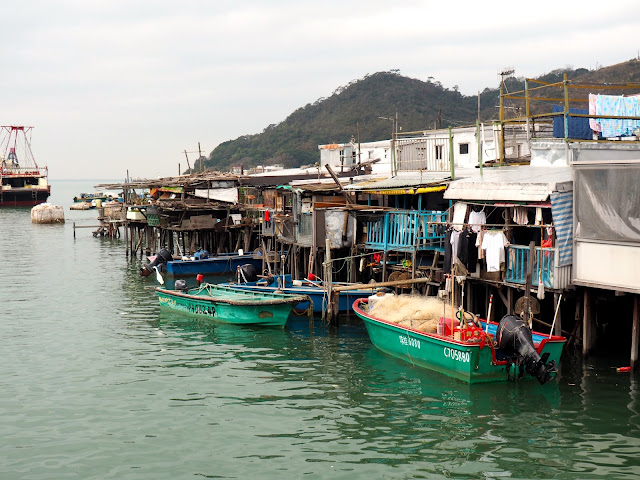
Tai O Fishing Village
4 February 2016